2.3.3 sorting algorithms
1/14
There's no tags or description
Looks like no tags are added yet.
Name | Mastery | Learn | Test | Matching | Spaced |
|---|
No study sessions yet.
15 Terms
big 0 cheat sheet

how does a bubble sort work
start at the beginning of the list
compare the current item with the next one
swap if they’re in the wrong order
repeat until the largest item "bubbles up" to the end
repeat the process for the remaining unsorted part
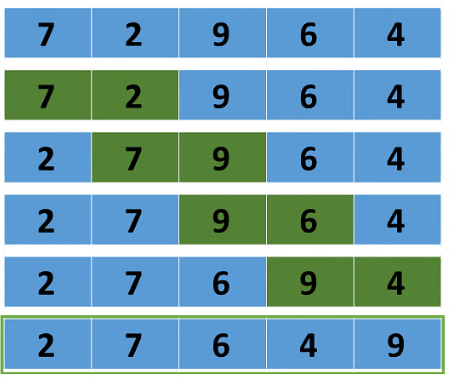
bubble sort complexities
time = O(n²)
space O(1)
inefficient but easy to implement, so good for small data sets
how does an insertion sort work
mark the first element in the array as sorted
compare the first element in the unsored part of the array with items before it
shift elements to the right until you find the correct spot
insert the element into the sorted list
repeat for all remaining elements

insertion sort complexities
time = O(n²)
space = O(1)
useful for small data sets
inefficient for large data sets
how does a merge sort work
divide and conquer
deconstruction and reconstruction
continuously split the array in half (recursion) until each sub-lists contains only 1 item
compare the individual items
merge them into temporary arrays with the smallest item going at the start
continuously merge the smaller arrays into a larger one, inserting items in the correct order
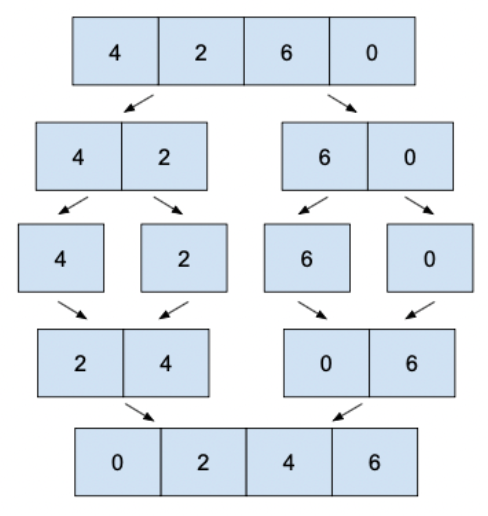
merge sort complexities
time = O(nlogn) takes same amount of time even if elements are ordered
space = O(n)
suitable for all data sets but works better for large data sets where memory is not a concern
idea for parallel processing environments where the concept of divide and conquer can be used
hard to code
how does a quick sort work
pick a pivot element from the list
the pivot will be used to split the list
go through the list and put
smaller values on the left
larger values on the right
repeat quick sort on the left and right sub-lists
the right element becomes the pivot for that sub-list
the final sorted list is the sorted left + pivot + sorted right
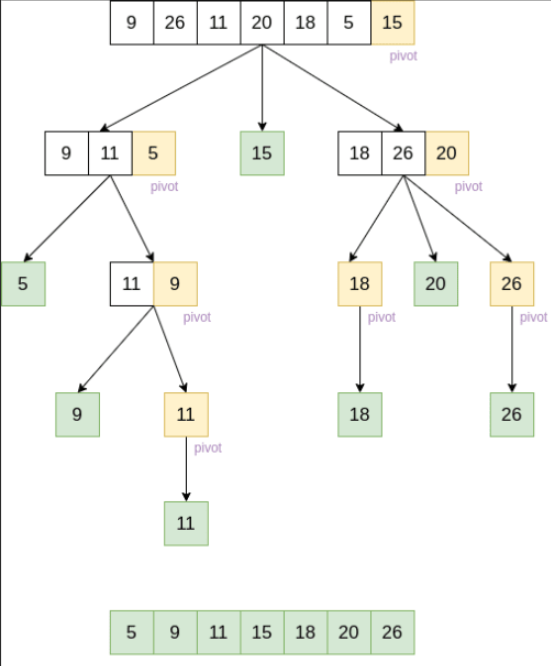
quick sort complexities
time, worst case = O(n²)
space = O(1)
fast as it uses divide and conquer
more efficient than merge sort as it uses less memory
suitable for any data set but better with larger ones
ideal for parallel processing environments where the concept of divide and conquer can be used
bubble sort in pseudocode

bubble sort in python
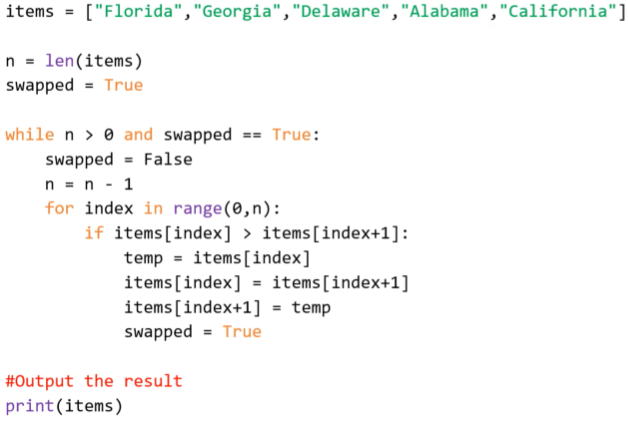
insertion sort in pseudocode
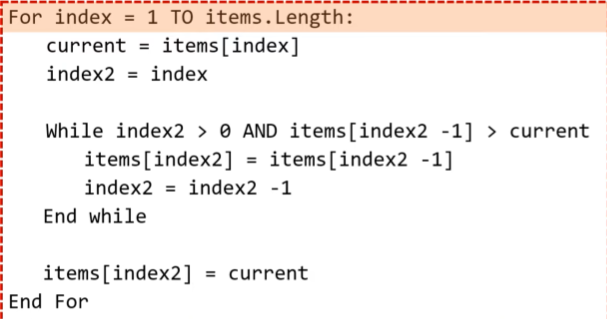
insertion sort in python
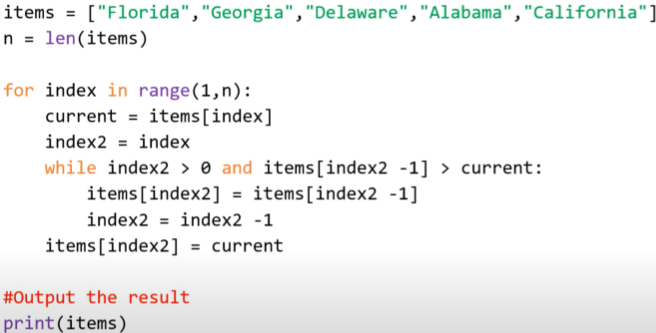
merge sort stages when programming

quick sort stages when programming
